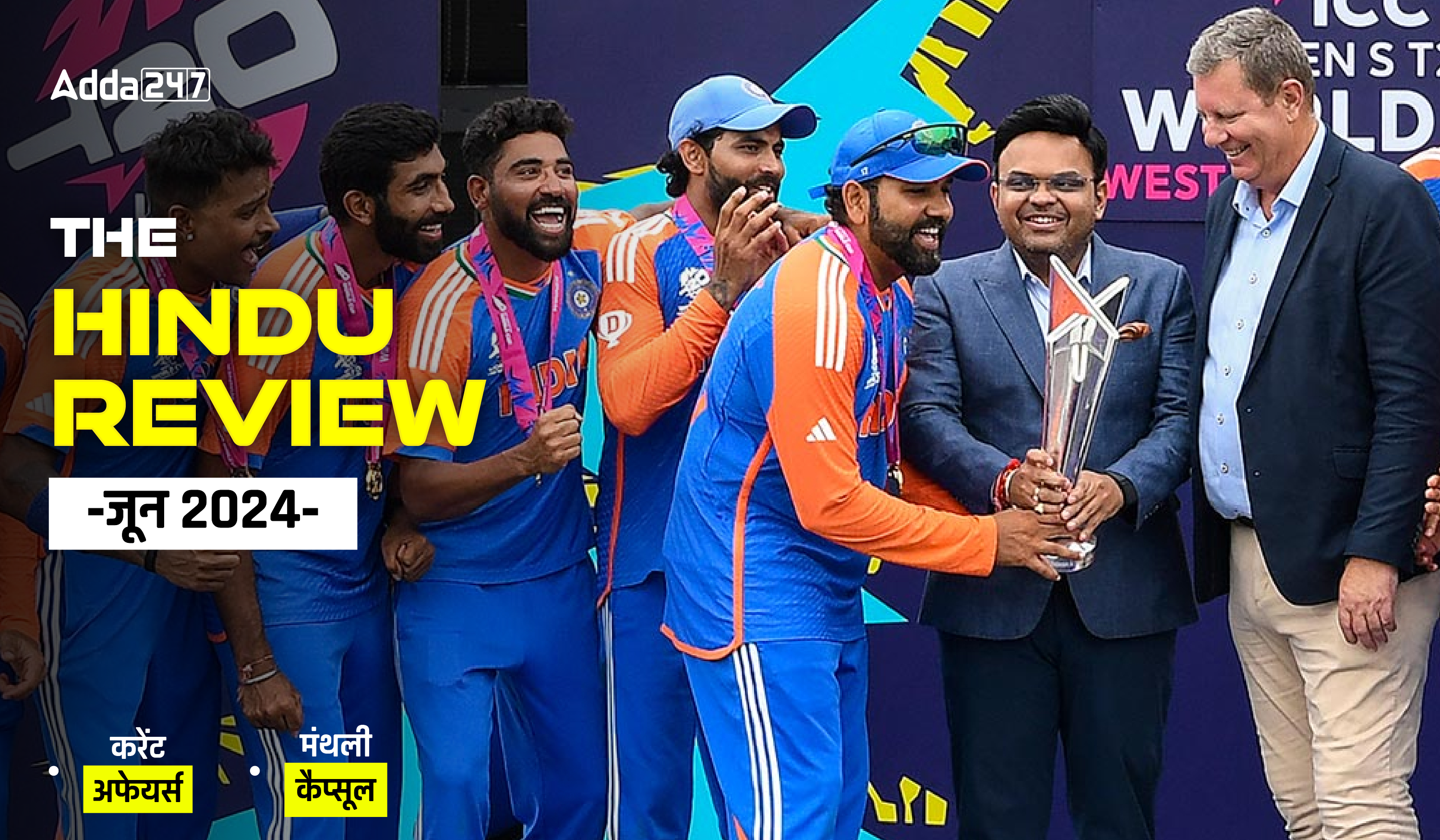Directions (1-10): Read the following passage carefully and answer the questions given below them. Certain words/phrases have been printed in bold to help you locate them while answering some of the questions.
Twenty years ago, on May 11, 1998, India took a leap into the unknown world of nuclear weapon powers with the tests at Pokhran. Though the decision was taken after great deliberation and with preparation, how the reaction of the world would affect the future of India was unknown. But today, it is certain that the action was timely and inevitable. India has reason to be satisfied over having accomplished many of the objectives of Pokhran II. Indian diplomacy triumphed in turning a grave crisis into an opportunity by securing legitimacy for its nuclear arsenal and removing obstacles in generating nuclear power. But the hasty enactment of a liability law, which inhibited nuclear trade, and the setback globally to nuclear power on account of the Fukushima disaster stood in the way of India benefitting fully from Pokhran II and the subsequent agreements reached. The fact, however, remains that the 1998 tests and the subsequent nuclear deal have brought India to the nuclear mainstream and opened up the global nuclear market for development of nuclear power without signing the Treaty on the Non-Proliferation of Nuclear Weapons (NPT) or the Comprehensive Nuclear-Test Ban Treaty (CTBT).
The tests shocked the world, particularly because they were done with utmost secrecy and the India-U.S. ties hit rock bottom. For nearly two months, the U.S. refused to have any dialogue with India and implemented the Glenn Amendment for the first time. Newer sanctions were imposed, and at one point it looked that relations would never recover. The talks between U.S. Deputy Secretary of State Strobe Talbott and Foreign Minister Jaswant Singh over the next two years were the most comprehensive dialogues India had with the U.S. on its nuclear policy, including the threat perception and future plans for security. India was anxious to have the sanctions lifted, but Mr. Singh sought to delink sanctions from the security dialogue, not to be pressurised to take quick decisions. Mr. Talbott began by insisting that the objective was to get India to sign the NPT. Then he listed five benchmarks as non-proliferation goals to normalise relations: signing the CTBT, halting production of fissile material, strategic restraint, strengthening export control regimes, and normalisation of relations with Pakistan. These were strongly rejected by India, but the talks proceeded on the assumption that India’s security concerns should be fully understood and that India would take certain measures to suit its new status. But, in effect, India met the U.S. demands more than half way, leading to an understanding, which led to President Bill Clinton’s visit to India and Prime Minister Atal Bihari Vajpayee’s visit to the U.S. in 2000. India refused to sign the CTBT, but declared a moratorium on testing; agreed to join the Fissile Material Cut-off Treaty negotiations without halting fissile material production; reaffirmed minimum deterrent without giving any number of warheads; and agreed to strengthen export controls. Additionally, India declared no-first-use and commitment to disarmament. Though no deal could be struck, the foundation was laid for what became the nuclear deal in 2008.
Though India placed its civilian nuclear facilities under perpetual safeguards, its nuclear assets remained fully insulated against external scrutiny and interference. India secured rights to receive uninterrupted nuclear fuel supplies as a trade-off against safeguards. It kept open its right to acquire advance enrichment and reprocessing technologies, although it would require bilateral negotiations with the U.S. and others. India’s sovereign right to test a nuclear device in the future has remained intact, although the deal would be in jeopardy in such an eventuality. Presidents George W. Bush and Prime Minister Manmohan Singh remained committed to the deal throughout the negotiations and made decisive interventions at crucial moments. Apart from the specific gains in the nuclear area, the new India-U.S. partnership, which promised investment and high technology, was a turning point in Indian foreign policy. On the negative side, the deal generated mistrust in Russia and China, which had to be dealt with in future years. Ten years after signing the deal, its gains and losses have proved much less game-changing than it was hoped in 2008. Though not a champion of the deal as a Senator, President Barack Obama committed himself to the implementation of the deal as part of his strategy to build good relations with India. But his personal affinity to the NPT and non-proliferation made him reluctant to interpret the 123 Agreement liberally. The expectation was that the prospect of nuclear trade with India would be a great attraction, but in 2009 Mr. Obama gave clear indication to his advisers that he would not sacrifice his non-proliferation agenda for commercial reasons. Much has happened since then, but the fact remains that there has been no nuclear trade till today. India’s nuclear liability law, forced on the government by critics of the deal, became a smokescreen for the U.S. to not supply nuclear material to India.
The repeated declarations about a way out of the liability law and plans to set up American reactors in India after Narendra Modi became Prime Minister have not changed the lack of enthusiasm in the U.S. on nuclear trade with India. In any case, the situation has become more volatile after Donald Trump became U.S. President. Another major event that has shaken confidence in the value of nuclear power in India’s energy mix was the Fukushima disaster. It has changed the global nuclear power scenario beyond recognition, though India has maintained that it is “business as usual”. The government’s recent decision to build more indigenous reactors points to the fact that the dream of imported nuclear reactors dotting India has disappeared. India’s focus has rightly shifted to solar and other new sources of energy.
Q1. As per the passage, what were the objectives accomplished by Pokhran ll?
(I) India was successful in achieving validity for its Nuclear Arsenal.
(II) Obstacles in generation of Nuclear Power were removed.
(III) Improvement in Indo-US relations.
(a) Only (I)
(b) Only (II)
(c) Only (III)
(d) Both (I) and (II)
(e) Both (II) and (III)
Q2. Which of the following depict that the Indo-US ties reached at the lowest possible level?
(I) US Implemented the Glenn Amendment for the first time.
(II) US refused to have any dialogue with India for nearly two months after the Pokhran test.
(III) US forced India to sign the Non-Proliferation of Nuclear Weapons Treaty (NPT)
(a) Only (I)
(b) Only (II)
(c) Only (III)
(d) Both (I) and (II)
(e) Both (II) and (III)
Q3. Which of the following given statements is/are correct in context with the passage?
(I) Another major event that has shaken confidence in the value of nuclear power in India’s energy mix was the Fukushima disaster.
(II) India was not able to secure rights to receive uninterrupted nuclear fuel supplies.
(III) The Nuclear Test shocked the world as it was done with utmost secrecy.
(a) Only (I)
(b) Only (II)
(c) Both (II) and (lll)
(d) Both (I) and (III)
(e) All are correct.
Q4. The reason that concealed the intention of US to not supply nuclear material to India is
(a) Non-Proliferation of Nuclear Weapons Treaty
(b) Comprehensive Nuclear-Test Ban Treaty
(c) India’s Nuclear Liability Law
(d) 123 Agreement
(e) None of the Above
Q5. Which of the following statements is/are not true in context to the passage?
(I) Though India placed its civilian nuclear facilities under perpetual safeguards, its nuclear assets remained fully insulated against external scrutiny and interference.
(II) India refused to sign the CTBT, but declared a moratorium on testing.
(III) Apart from the specific gains in the nuclear area, the new India-U.S. partnership, which promised investment and high technology, was a turning point in Indian foreign policy.
(a) Only (I)
(b) Only (II)
(c) Both (II) and (lll)
(d) Both (I) and (III)
(e) All are correct.
Q6. Which of these is the most suitable title for the passage above?
(a) Indo-US Ties
(b) The story of Pokhran
(c) Pokhran II, biggest nuclear test
(d) Pokhran II, twenty years later
(e) None of the Above
Q7. Choose the word which best expresses the meaning of the following word given in bold in the passage
INEVITABLE
(a) Fortuitous
(b) Impending
(c) Condemn
(d) Egregious
(e) None of the above
Impending: be about to happen
Q8. Choose the word which best expresses the meaning of the following word given in bold in the passage
SCRUTINY
(a) Audit
(b) Serendipity
(c) Ramify
(d) Reproach
(e) Satiate
Audit: a systematic review or assessment of something.
Q9. Choose the word which is OPPOSITE to the word given in passage.
JEOPARDY
(a) Peril
(b) Venture
(c) Insecurity
(d) Assurance
(e) Liability
Q10. Choose the word which is OPPOSITE to the word given in passage.
VOLATILE
(a) Fickle
(b) Erratic
(c) Reliable
(d) Ticklish
(e) Giddy
Directions (11-15): In the passage given below there are blanks which are to be filled with the options given below. Find out the appropriate word in each case which can most suitably complete the sentence without altering the meaning of the statement.
An imposing installation of a human figure was the cause for much excitement. At another corner, a group of art lovers (11)…………….. with appreciation at terracotta and bronze sculptures. The walls came alive with shades and imageries of artists’ thoughts. A creative mix of ideas and experimentation of styles and mediums were (12)………………. at the recently concluded ‘Graduation Show 2018’ of the graduate and post graduate students of Fine Arts Department of Andhra University. More than 100 paintings, drawings, prints and sculptures by around 40 students were (13)……………… at the show. Some of the highlights included art installations, sculptures in various mediums and a mezzotint work. J Naresh captured the essence of the simplicity of village life through a series of acrylic on paper works. The (14)……………. of village life where he grew up left a lasting impression on him. His creations brought out the innocence of childhood and had a (15)……………….. sense of nostalgia of picturesque countrysides and simple lives.
Q11.
(a) Censured
(b) Ignored
(c) Glanced
(d) Dissuade
(e) Condemned
Q12.
(a) Obscure
(b) Sardined
(c) Muffled
(d) Portrayed
(e) Detained
Q13.
(a) Exhibited
(b) Concealed
(c) Notified
(d) Covered
(e) Justified
Q14.
(a) Agitation
(b) Violence
(c) Ruffle
(d) Turbulence
(e) Serenity
Q15.
(a) Hampered
(b) Lingering
(c) Reasonable
(d) Subtle
(e) Trivial
You May also like to Read:






